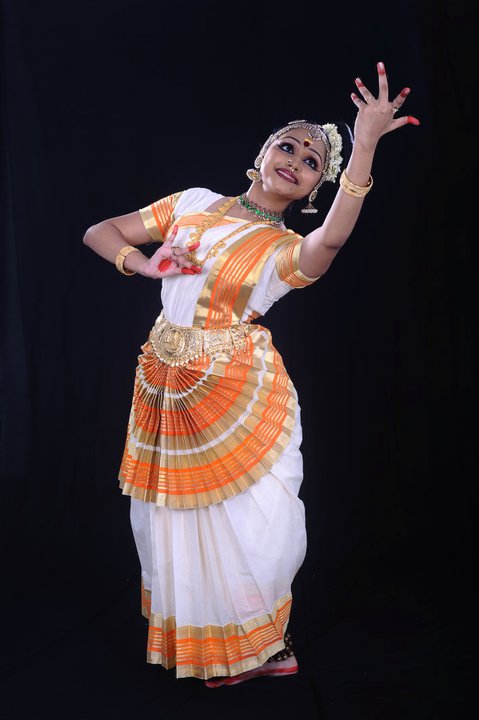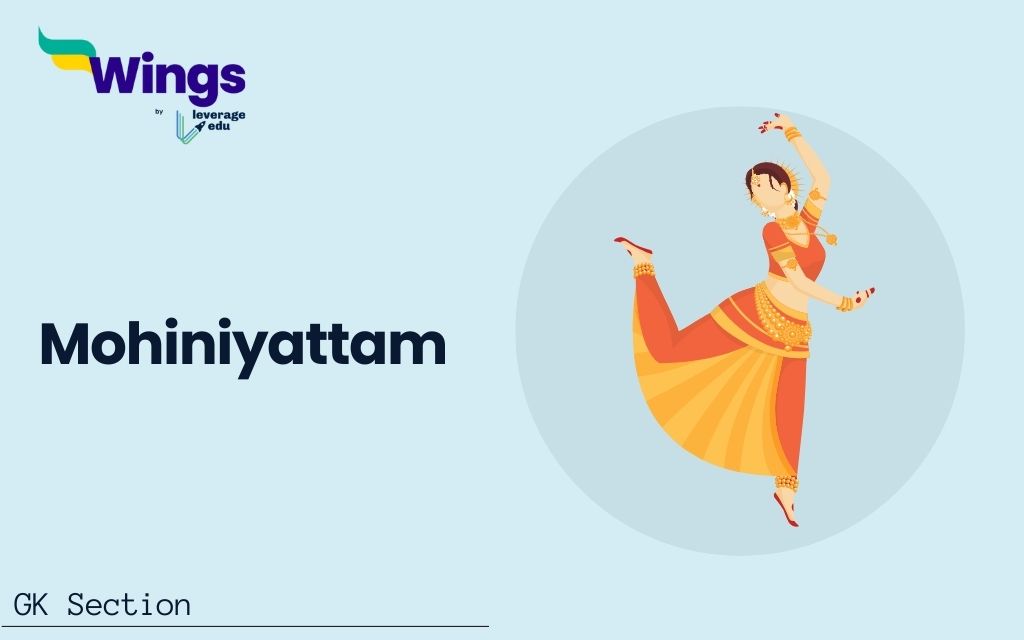Mohiniyattam, commonly known as Mohiniattam, is a classical dance form from Kerala. This dance form is known for its elegant and feminine movements and it is mostly performed by women. The term ‘Mohiniyattam’ is a combination of two words: Mohini, an avatar of the Hindu god Vishnu, and attam, which means dance.
Contents
Mohiniyattam: Historical Significance
This dance form has a rich history with many different origins. We shall look at them briefly.
- Mythological Origins: This dance form is associated with the enchantress avatar of the Hindu God Vishnu, who is said to perform this dance to distract demons and ensure the distribution of the immoral liquid ‘Amrit’ to the gods. Its grace and feminine movements reflect Mohini’s beauty and charm.
- Historical Origins: The dancing form known as ‘Mohiniyattam’ originated in the 16th century. It is mentioned in ancient books such as the Natya Shastra. This dance style evolved during the reign of Chera ruler Swathi Thirunal in the nineteenth century, who was a patron of the arts and music.
- Swathi Thirunal composed several music pieces specifically for Mohiniyattam, which are still performed today.
- Mohiniyattam has been practised as a type of ritual worship in temples from ancient times.
- This dance form was also part of the Devdasi tradition, which saw women devote their lives to serving the deity through dance and music.
- This dance form was revived in the early twentieth century after a period of decline during colonialism.
- Kalamandalam Kalyanikutty Amma, often known as the “Mother of Mohiniyattam,” was vital in restoring and popularising the dance.
Also Read: What are the Different Dances forms of India?
Characteristics of Mohiniyattam
Mohiniyattam is distinguished by its gentle, feminine movements. There are certain features and characteristics of Mohiniyattam that we will discuss here:
- Lasya Style: Mohiniyattam is characterized by Lasya Style. This style focuses on graceful, soft and femMohiniyattam is defined by Lasya Style. This style highlights smooth, soft, and feminine movements.
- Traditional dress: Mohiniyattam’s traditional clothing is a white or off-white sari with golden borders called kasavu. The dancers wear basic gold jewellery and jasmine flowers in their hair.
- Makeup: The makeup is kept simple, with the eyes highlighted to enhance facial expressions. Dancers wear anklets on their feet to mark rhythmic movements.
- Music and Instruments: Mohiniyattam’s music is based on Carnatic classical music. The mridangam, violin, veena, and edakka are commonly used instruments in this dancing form.
- Mudrasa and Expression: Mudras refer to hand gestures, whereas abhinaya refers to facial expressions. Mohiniyattam’s narrative relies heavily on mudras and abhinaya. The dance often follows a narrative, using themes from Hindu mythology.
- Performance Structure: A typical Mohiniyattam performance consists of various components, including Cholkettu, Jatiswaram, Varnam, Padams, and Tillana.
- Cholkettu: This is an invocatory piece.
- Jatiswaram: This is a pure dance composition featuring precise footwork.
- Varnam: This is a combination of pure dance and emotive sequences.
- Padams: They are expressive pieces that communicate stories and emotions.
- Tillana: It is the final pure dance piece with bright motions.
Also Read: Origin, Evolution, Dress, Elements and Famous Artists
Mohiniyattam:Social and Cultural Context
Mohiniyattam has been done as a ritual in temples from ancient times. It’s also part of the Devdasi tradition. The Devdasi tradition is one in which women dedicate their lives to serving god through dance and music. During the colonial period, the devdasi tradition was stigmatised, and Mohiniyattam, like other Indian classical dance forms, declined.

Mohiniyattam has traditionally focused on themes of love and devotion, drawing inspiration from Kerala’s rich cultural and mythical history. This dance is very expressive and narrative, emphasising facial expressions to convey intense emotions.
Mohiniyattam: Contemporary Significance
Mohiniyattam is now widely recognised as one of India’s eight traditional dance forms. It continues to be performed and taught in India and other foreign countries. It has experimented with a variety of innovative styles while remaining true to its core and traditional values.
Also Read: History of Kathak
Mohiniyattam: Preservation
Efforts have been made to promote and preserve this Indian dance form. Institutions, festivals, and individual practitioners have all contributed to the preservation of the values of this historic dance form. Organisations such as Kerala Kalamandalam and International Cultural Exchanges help to raise awareness and appreciation for Mohiniyattam around the world.
Mohiniyattam: Prominent Personalities
Some significant persons have contributed to the growth and popularity of Mohiniyattam. Some well-known names include:
- Madhavi Amma, is known for its dedication to preserving the history of this dancing form.
- Kalamandalam Kalyanikutty Amma, also known as the ‘Mother of Mohiniyattam’. She had an important part in the revival of this dancing style.
- Kanak Rele, a scholar and dancer, modernised the dance style while remaining true to its traditions and values.
Mohiniyattam is historically important due to its close connection to Kerala’s cultural and religious traditions, royal support, resilience, and revival in the modern day. Mohiniyattam, a symbol of elegance, beauty, and cultural identity, continues to captivate audiences and add to the rich tradition of Indian classical dance.
FAQs
Mohiniyattam is a classical dance form from Kerala and southwestern India. This dance is performed by women to honour Lord Vishnu’s incarnation as Mohini.
The term ‘Mohiniyattam’ is a combination of two words: Mohini, an avatar of the Hindu god Vishnu, and attam, which means dance. This dance style is associated with the enchantress avatar of the Hindu god Vishnu, who is believed to perform it to distract demons and ensure the distribution of the immoral liquid ‘Amrit’ to the gods. Its grace and feminine movements reflect Mohini’s beauty and charm.
This dance was prohibited due to colonial control. However, there is no historical evidence that this dancing form has been banned by any law enforcement. However, Mohiniyattam, along with other classical Indian dance forms, faced decline during that time.
Related Posts
| Bharatanatyam is the Dance Of Which State? | Kuchipudi Dance History and Types |
| Yakshagana: History, Variants, Salient Features and Famous Artists | What are the Different dance forms of India? |
Hindustani And Carnatic Music | Facts About Kerala |
| Arts of the Indus Valley | Tribal Paintings of India |
This was all about the “Mohiniyattam”. For more such informative blogs, check out our UPSCExams Section and Study Material Section, or you can learn more about us by visiting our Indian exams page.
 One app for all your study abroad needs
One app for all your study abroad needs














